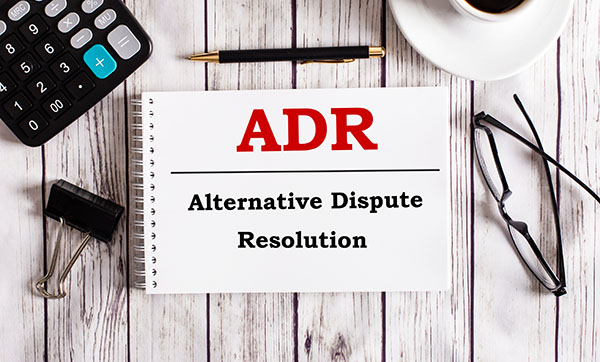
On Thursday October 21, 2021, EDI’s Resolution and Equity division hosted a discussion entitled, Keys to Success in the Federal ADR Process. Judge Kathryn Brown, an Administrative Judge with the Equal Employment Opportunity Commission (EEOC), led the virtual event. The event was strategically tailored to the Department of Health and Human Services and their operating division’s Equal Employment Opportunity (EEO) counselors, mediators/ADR practitioners, and Labor and Employee Relations staff.
Judge Brown’s insightful talk provided attendees with guidance and tips for navigating the Federal ADR process; a process used to settle disputes by means other than conventional litigation. Through ADR, aggrieved parties meet with a neutral third party to discuss the circumstances surrounding the dispute and devise a resolution plan. These methods are designed to peacefully resolve conflict and seek to eliminate the need for litigation, which oftentimes can be lengthy, expensive, and cumbersome. ADR techniques drastically reduce the number of resources needed to settle cases for all parties involved. In the Federal Government, mediation is the method of ADR most frequently used.1
The crux of Judge Brown’s discussion posited three opportunities for improvement in the federal ADR process to increase the possibility for early resolution in EEO cases where ADR is requested. The first opportunity suggests that relationship development and open communication between the EEO Counselor and the Aggrieved Party (AP) are essential to ensuring the success of ADR. Judge Brown explained that the EEO counselor is the first point of contact in the informal EEO process and is responsible for explaining resolution options to the AP. She pointed out that clear communication between the parties and a firm understanding of how ADR works is crucial to the success of the process.
Second, the communication between the EEO counselor (or the ADR practitioner based on the process at certain federal agencies) and the Responsible Management Official (RMO) is another key opportunity to increase the likelihood of success in the ADR process. The EEO counselors have the unique opportunity to introduce ADR/mediation as a positive next step in understanding the AP’s EEO complaint and the underlying issues that led to the complaint. Engaging with the RMO and explaining that the charge of discrimination is not personal helps address possible defensiveness and reluctance to participate in the process and fosters exploration of resolution.
Lastly, Judge Brown explained the crucial relationship and communication between the RMO and the Labor Employee Relations (LER) specialist. Typically, the LER specialist provides consultation to RMOs if the complaint involves opposing disciplinary or performance actions taken by management against the AP. LER’s involvement is intended to protect the agency by ensuring that the RMO is aware of agency policy and that the disciplinary or performance protocols are not compromised. Judge Brown also explained the opportunity for the LER Specialist to promote ADR as an opportunity to realign communication and improve the relationship between the AP and the RMO. Encouraging the RMO to attend in “good faith” with an open attitude to resolve is likely to improve the outcome of ADR/mediation.
Judge Brown’s recommendations and suggestions to the Federal HHS ADR community were well received by attendees and can be easily implemented in our work. EDI is grateful for the opportunity to host her as our special guest speaker.
To learn more about the federal ADR process, take a look at the EEOC’s Federal Sector Alternative Dispute Resolution Fact Sheet.
Sources
Do you have a story idea for us? Do you want to submit a guest blog? If it's about equity, diversity, or inclusion, please submit to edi.stories@nih.gov.
For news, updates, and videos, follow or subscribe to EDI on: Twitter, Instagram, Blog, YouTube.






